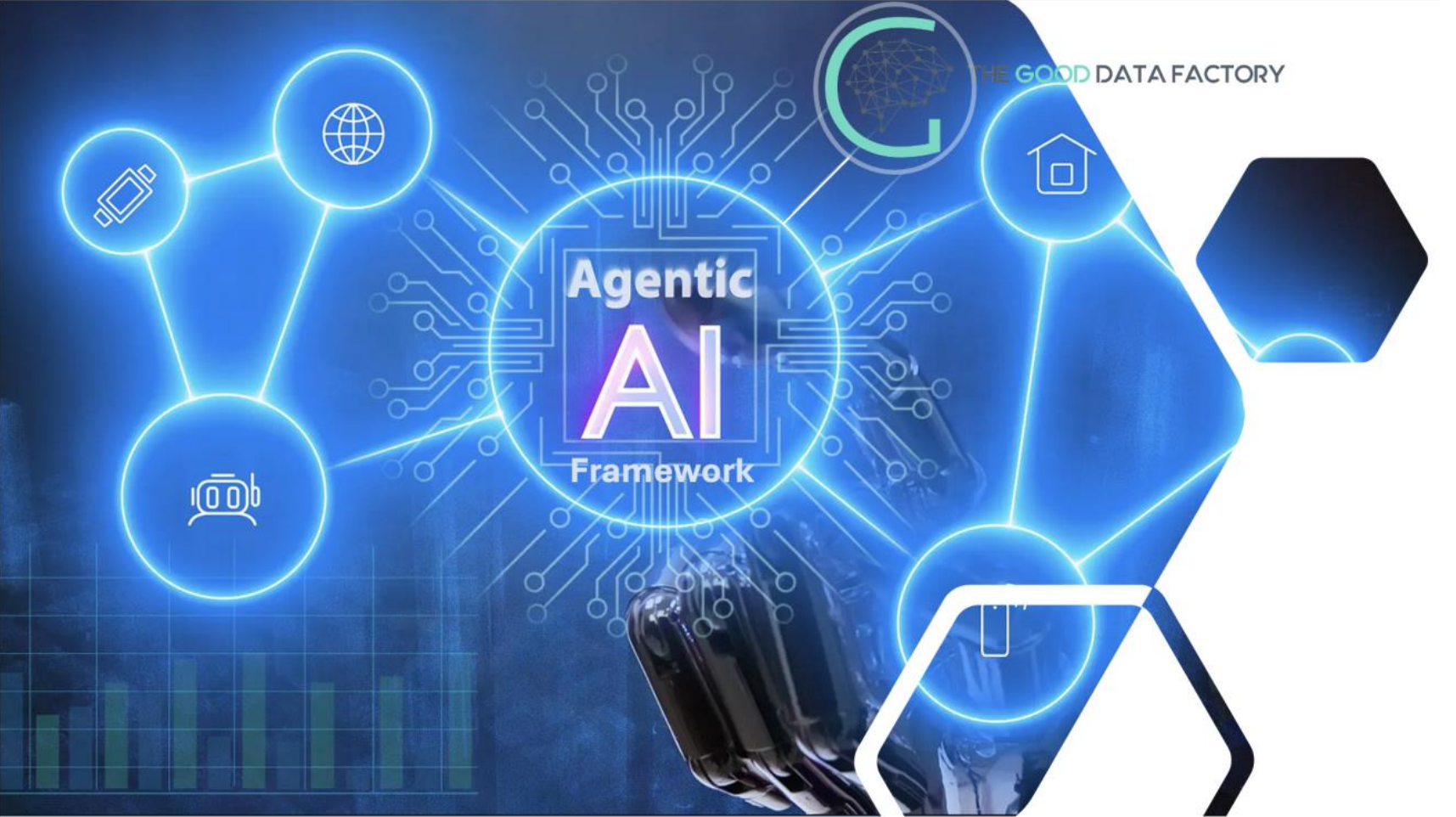Agentic AI Framework — Engineering Autonomous, Scalable Multi-Agent AI Systems for Enterprise Transformation

Executive Summary
The complexity of enterprise operating models, business processes and workflows require AI systems that go beyond monolithic models. Multi-agent agentic AI frameworks offer a new paradigm where autonomous agents collaborate to solve complex problems dynamically. This article details the architecture, engineering principles, and business impact of TGDF’s multi-agent AI approach, emphasizing LLM-agnostic design, integration with Edge AI ASIC hardware, and secure governance. We illustrate how these systems enable scalable, flexible, transparent and intelligent automation that drives measurable enterprise transformation and sustainable differentiation.
1. Introduction: From AI Models to Agentic Systems
Agentic AI Frameworks represent the next frontier in enterprise AI, enabling autonomous, collaborative agents to dynamically solve complex business challenges beyond the capabilities of traditional monolithic models. These multi-agent systems operate with goal-driven autonomy, coordinating tasks, reasoning about context, and adapting in real time to deliver scalable, flexible, and transparent automation.
- Dynamic task allocation
- Continuous learning and adaptation
- Resilience to changing environments
This shift unlocks new levels of automation and operational efficiency, empowering enterprises to transform workflows, maintain data sovereignty, and achieve sustainable competitive advantage. This article explores the engineering principles, architectural design, and measurable business impact of agentic AI systems as a foundation for enterprise transformation.
2. Key Concepts and Architecture of Multi-Agent Agentic AI
The architecture of multi-agent agentic AI is built around autonomous agents that perceive, reason, plan, act, and adapt collaboratively to solve complex enterprise problems. Each agent operates independently with specialized roles, processing diverse data inputs through perception modules—such as natural language understanding and sensor integration—and leveraging large language models (LLMs) for their conversational, reasoning and decision-making capabilities.
Agents break down high-level goals into manageable tasks, coordinate their plans via a shared memory or communication layer, and execute actions through integrated APIs or edge hardware, such as ASIC-accelerated devices. Continuous feedback and learning loops enable agents to adapt over time, improving efficiency and responsiveness. Here are the key characteristics of our Agentic AI framework:
- Agent Autonomy: Each agent operates independently, making decisions based on local context and goals.
- Communication & Coordination: Agents share information and negotiate tasks to optimize collective outcomes.
- LLM-Agnostic Design: Framework supports multiple large language models, allowing enterprises to avoid vendor lock-in and select best-fit models.
- Edge AI ASIC Integration: Hardware acceleration enables real-time inference and low-latency collaboration at the edge.
- Security & Governance: Role-based access, audit trails, and compliance controls embedded throughout.
This modular, scalable architecture supports dynamic collaboration, seamless integration with enterprise workflows, and robust governance, making it ideal for flexible, transparent, and intelligent automation at scale.
3. Engineering Multi-Agent Systems at Scale
Engineering multi-agent AI systems at scale requires specialized expertise, architectural depth and careful design to ensure reliability, flexibility, and efficient coordination among autonomous agents. Key engineering practices include defining clear, specialized roles for each agent to avoid conflicts and optimize collaboration while establishing robust communication protocols that enable real-time information sharing and dynamic task coordination.
- Modular Architecture: Agents are deployed as independent services orchestrated via workflow engines.
- Workflow Orchestration: Dynamic task assignment and monitoring ensure efficiency and fault tolerance.
- Continuous Learning: Feedback loops enable agents to improve through reinforcement learning and federated updates.
- Deployment Models: Support for on-premises, hybrid cloud, and edge deployments tailored to client needs.
By balancing autonomy with control and embedding security at every layer, enterprises can build scalable multi-agent systems that deliver resilient, transparent, and intelligent automation across complex workflows.
4. Use Cases and Business Impact
Our multi-agent AI framework is driving significant transformation across industries by enabling autonomous agents to collaborate on complex tasks, delivering measurable business impact. Some prominent use cases include:
- Telecom: Autonomous agents predict and resolve network incidents, reducing downtime by 25%.
- Retail: Agents collaborate for hyper-personalized marketing and demand forecasting, cutting inventory costs by 30%.
- Manufacturing: Multi-agent orchestration accelerates ML-to-ASIC workflows, reducing design cycles by 75%.
These results highlight how TGDF agentic AI framework provides critical capabilities that translate into tangible ROI and operational excellence across diverse enterprise domains.
5. TGDF’s Framework and Methodology
TGDF’s framework customizes multi-agent systems by closely aligning agent roles and workflows with each client’s specific business processes and objectives. It begins by breaking down complex enterprise goals into modular, manageable tasks assigned to specialized agents, ensuring clear responsibilities and efficient collaboration.
- Adaptive modularity: The architecture is modular, allowing agents to be independently configured and updated without disrupting the whole system, which supports alignment with evolving workflows and business needs.
- Robust communication: Standardized yet flexible communication protocols enable seamless, context-aware information sharing among agents, ensuring coordinated and efficient collaboration even in dynamic environments.
- Clear role definition: Each agent is assigned a specialized role with clear responsibilities, preventing conflicts and optimizing task execution aligned with client-specific processes.
- Scalable orchestration: Orchestration layers manage priorities and resource allocation while preserving agent autonomy, enabling scalable, transparent, and resilient multi-agent workflows that integrate smoothly with enterprise operations.
This combination of principles guarantees that TGDF’s multi-agent systems are tailored, adaptable, and robust enough to meet diverse client requirements.
Our methodology draws on best practices in multi-agent design—such as modularity, scalability, and error handling—and leverages configurable frameworks that register agents as callable components with defined roles and tools, enabling precise orchestration and seamless integration with enterprise workflows.
6. Conclusion and Future Outlook
Multi-agent agentic AI represents the next evolution in enterprise automation, delivering scalable, flexible, and sovereign AI systems. TGDF leads in engineering these frameworks, combining deep AI expertise with hardware innovation to empower enterprises on their AI transformation journey.
